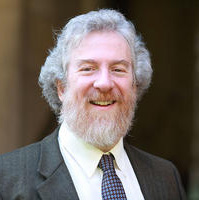Torah—Vision Beyond the Text (Part 1)

In these weeks leading to the festival of Shavu’ot, designated by the Rabbis as Z’man matan Torateinu (Season of the Giving of Torah), let us look at the way that Torah appears in our liturgy. Torah refers, of course, to the humash—the Five Books of Moses—but the siddur makes clear that it is much more than that. In the preliminary service, the blessings for the study of Torah (Siddur Sim Shalom for Shabbat and Festivals, 63) are followed by verses from the humash, and these verses are followed immediately by selections from the Mishnah and Gemara, thus making it clear that these texts are Torah as well. The writings of the Sages (even to the present day) are not seen merely as commentary or amplification of Torah—rabbinic writings are also Torah, the “Oral” Torah.
The point in the Shabbat service when the Torah scroll is returned to the Ark is a peak moment for many people. The words and music come together in a shared outpouring of yearning—and even love—for the Torah and all that it embodies and embraces. We have profound shared memory and connection with the ancient symbol of the handwritten Hebrew text on parchment with wooden rollers, each of which is called an Etz Hayim (Tree of Life). When we sing the words Etz Hayim hi (154), these radically reframed words from Proverbs 3:18 connect the visceral physical reality of the Sefer Torah (Torah scroll) with the Tree of Life of the Garden of Eden, and our vision of the ultimate life eternal. This can be found in the blessing after the Torah reading that thanks God, “Who has given us Torah of truth, and planted among us eternal life” (Siddur Sim Shalom, 142). The message of the blessing is clear: the Torah is the source in this world of eternity.
The liturgy then brings us to a phenomenal, radical, and unexpected juxtaposition. Right after we sing of the future of Torah as the Tree of Life to those who grasp hold firmly, we are suddenly taken to a strange moment in the Bible where past and future are inextricably and paradoxically comingled. The penultimate verse of Lamentations 5:21, “Hashiveinu Adonai eleykha venashuva, hadesh yameinu k’kedem” (Turn us back to You Adonai, and we will return; renew our days as of old), anomalously connects the past and future, and this final metaphor—as the Ark is closed—invites us to recall the best of the past and bring it forward as we create the future with the entire Torah, Written and Oral, as our guide.
There are many musical settings for these texts when returning the Torah to the Ark.
This composition by Tanchum Portnoy has become increasingly popular in recent years. The two recordings offer an “original” (1975) version and a more recent rendering from Congregation Rodef Shalom in Pittsburgh.



